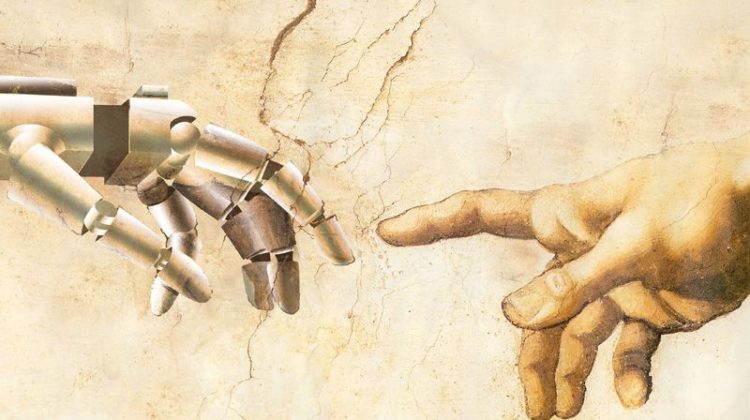
The rise of artificial intelligence to the new electricity of the 21 century raises valid concerns of machines overtaking human jobs. Human beings’ shortcomings become apparent when looking at increasingly tasks specific super-human performance achieved by advanced artificial intelligence. Outspoken Ai critics quickly emphasize human intuition, empathy, and ingenuity as compensating traits. A weak argument considering the reality that many tasks artificial intelligence already has overtaken neither required compassion nor imagination.
The ongoing quest to augmented human beings with a myriad of artificial intelligence tools to improve efficiency threatens the very nature of work precisely through the resulting automation. The real question of our time gravitates around how the future of work will look like in the age of human augmentation?
When balancing innovation capabilities, the company’s profit formula dictates all major business decisions. Fundamentally, the profit formula incents efficiency optimization of the existing business, which drives a constant demand for optimizing business operations. Historically, management consultants have served that need very well by establishing best practices in companies across industries. With the ongoing shift of digitalization, consulting companies adopted accordingly and now offer digital transformation as a service, completely overlooking the rise of human augmentation that fundamentally questions the nature of work.
Artificial intelligence inherently threatens to replace human workers, and Ai companies have swiftly responded by emphasizing the actual goal of increasing productivity per worker instead of replacing anyone. However, the argument purposely omits the implication of eliminating the need for any non-managerial job due to the very nature of operating advanced artificial intelligence that fully automates digital and increasingly industrial workflows through Blockchain and IoT.
The problem never was the replacement of jobs, but the many jobs that were never created. For example, Amazon already operates over 50000 robots in its warehouse supervised by only a handful of technical operators. With further progress in artificial intelligence, warehouses and logistics will eventually operate fully automatically under an Ai system’s supervision.
Amazon works hard to lower its TCO to a point at which companies that employ humans cannot compete anymore. Regarding employment, the outlook becomes grimmer, considering that the profit formula incents efficiency optimization, and the capital market rewards it accordingly. Those who do not automate operations will diminish, while those who automate do not need human labor anymore. The nearly stagnating employment rate in the U.S. retail industry speaks for itself. The tools for complete automation of operations continuously improve and accelerate the transition towards a digital economy that tightly integrates with the physical world to ensure completely automated workflows.
Artificial intelligence does not hold the future of work; instead, it amplifies human labor’s diminishing value. Advanced Ai companies generate larger profit per employee, and, again, the capital market rewards them accordingly. Ueber made $750.000 of revenue per employee in 2017, and it is far from having fully optimized capital efficiency. Letting advanced artificial intelligence do the hard work is just one side of the equation. Equally important, outsourcing work to “contractors” helps increasing the revenue per employee metric further since contractors do not count towards the actual workforce.
The payout to “contractor” drivers remains one of Ueber’s main expenses on its balance sheet. The research focuses on autonomous driving to remove these drivers and the related payout entirely from the balance sheet. It is not the technology that drives Ueber to pursue autonomous driving but the goal of maximizing profit.
Ultimately, companies will deploy artificial intelligence for human augmentation to drive productivity per head to unseen heights. Human augmentation inherently imposes a threat to traditional employment and opens entirely new opportunities. The fundamental danger to human labor comes from the emerging reality that one single Ai augmented worker can easily outperform an entire team. The same logic applies to advanced robotics since a warehouse full of robots barely needs more than one human supervisor.
The most significant opportunity of human augmentation emerges from human beings becoming capable of solving previously intractable problems. Artificial intelligence amplifies human abilities while simultaneously mitigating human shortcomings.
The age of human augmentation will unavoidably begin with a struggle to define the very meaning of work, especially when mundane and manual tasks become increasingly automated due to incentives from the financial markets.
Automation systematically creates net-negative employment, which means more jobs will be eliminated than created leading to under-employment at scale.
The U.S.’s official unemployment rate (U3) remains at a historic low of just around 3%, but the underemployment rate (U2) remains high at 12–14%. Even more troubling, the official U3 unemployment rate does not even count people who are neither working nor looking for work anymore. These are captured in the U6 rate, which stays at a relatively high 7% of the U.S. population.
The high underemployment rate (U2) causes a systematic risk of mass unemployment whenever the real economy contracts because temporary and part-time workers usually are the first to let go of otherwise good companies.
Augmenting the skilled workforce with artificial intelligence unavoidably reduces the unskilled workforce and aggravates the already prevalent social divide. Responding to the increasing social shift with a machine tax on automation will only incent more sophisticated tax evasion while leaving the underlying cause of the change untouched. Distributing an unconditional income to society may give some time to breathe and think but ultimately does not answer how the future of work will look like in the age of human augmentation?
Increasingly, work becomes a design activity augmented by artificial intelligence with the execution delegated to automation technology. Therefore, creative skills, design skills, and system thinking will only increase in value while traditional trade skills will be replicated in machines.
Human augmentation through artificial intelligence inherently produces bold and ambitious goals previously unattainable because of the massive automation it enables. The bold quest makers will rule the age of human augmentation by setting ambitious goals that demand an augmented workforce.
From this perspective, the quest to electrify transportation or the quest to colonize planet Mars all of a sudden appears increasingly as a solution in the sense of becoming a large-scale employment program with a high chance of receiving Government subsidies precisely because of the large quantity of skilled and augmented workers needed.
Marvin F. L. Hansen
Updated: Jan 20, 2021
First published: Nov 27, 2018
Src:
U.S. Bureau of Labor Statistics, Alternative measures of labor underutilization
https://www.bls.gov/news.release/empsit.t15.htm
U.S. underemployment rate from July 2016 to July 2017 (by month)
https://www.statista.com/statistics/205240/us-underemployment-rate/
Underemployment Takes An Outsized Toll On The Economy
https://www.forbes.com/sites/eriksherman/2018/09/25/underemployment-takes-an-outsized-toll-on-the-economy-according-to-a-new-study/#3f82b1a6234e
